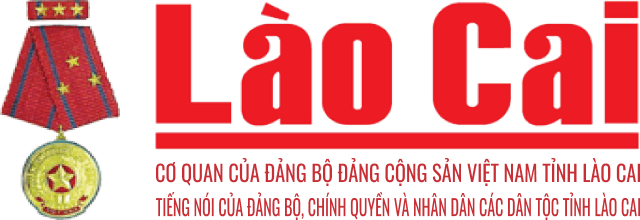These days, coming to My Chanh ginger jam village, Hai Chanh commune, Hai Lang district, we can easily see the bustling production atmosphere. People, families are busy, rushing to make ginger jam to supply the market in time for Tet holiday. This is also the main production season of the year for people to have more income.

My Chanh ginger jam is produced entirely according to traditional methods, so it is favored by many consumers - Photo: LA
Chairman of Hai Chanh Commune People's Committee Bui Van Sinh said that making ginger jam in My Chanh village is a long-standing traditional profession. Initially, it was mainly for family use, but later, to meet market demand, some households in the village purchased raw materials and expanded the scale of ginger jam production to sell during the Lunar New Year.
Gradually, the whole village learned from each other to produce ginger jam and became a craft village. My Chanh ginger jam appeared in all localities in the province and then in many provinces and cities across the country. As scheduled, every year around the beginning of the 11th lunar month, the people of My Chanh ginger jam village are busy preparing ingredients and making ginger jam. For many years, the profession of making ginger jam during Tet has helped the people here have a stable source of income.
Considered one of the largest ginger jam factories in My Chanh ginger jam village, Tuan Tam ginger jam production facility currently has nearly 50 workers busy with stages such as: peeling, grating ginger, boiling ginger, separating jam, packaging...
Like previous years, every time this time comes, from morning to late evening, the facility always has people coming to take ginger jam to sell. Mr. Ho Ngoc Tuan, owner of Tuan Tam ginger jam production facility, said that to make My Chanh ginger jam slices with a characteristic spicy taste, the raw ginger chosen to make the jam must be fresh ginger with many branches. Ginger is mainly imported from the Central Highlands provinces because the ginger grown there is large in size, ensuring large, old, beautiful ginger slices, and has a high essential oil content, giving a spicy taste but not as pungent as grown in other places.
After peeling, the ginger is sliced into thin slices, washed, and boiled thoroughly with lemon and vinegar. It is then taken out, washed again, and put into a hot pan to be caramelized with sugar. During the process of caramelizing with sugar, to prevent the ginger jam from burning or clumping, the cook must stir constantly and maintain the right heat so that the sugar and ginger blend together. The caramelized ginger jam is poured into a cool place and then used chopsticks to separate the jam slices, preventing them from sticking together.
For Mr. Tuan's facility, up to now, he has produced about 30 tons of ginger jam and sold it nationwide. In addition to traditional and retail customers, he also takes advantage of the social network Facebook to promote his ginger jam products to a large number of consumers nationwide. To meet the increased demand during Tet, the facility hired nearly 50 seasonal workers. Each day, it produces 4-5 quintals of ginger jam.
Each worker is paid from 150,000 - 200,000 VND/day, some workers who do more difficult jobs are paid up to 400,000 - 500,000 VND/day. "With signed orders, we expect to produce about 40 tons of ginger jam this Tet season, with a revenue of more than 2 billion VND. After deducting expenses, the profit is about 200 million VND," said Mr. Tuan.
Through many meticulous stages, the ingredients are carefully selected, absolutely no preservatives are used, with a characteristic aromatic, spicy flavor, natural ginger color without bleaching, so My Chanh ginger jam is very popular with customers in and outside the province during Tet. In addition, ginger jam also follows people who work far away to visit their hometown to bring back as if to retain a bit of the flavor of Tet at home.
Mr. Bui Van Sinh said that currently, the whole commune has about 60 - 70 households producing ginger jam, of which about 10 households produce on a large scale. The expected output is more than 100 tons of ginger jam, bringing in revenue of about 6 - 7 billion VND. This year, the price of ginger jam has increased compared to last year, at 55,000 - 70,000 VND/kg, so the workers are very excited.
According to Mr. Sinh, although only working for a short time, the traditional ginger jam making profession not only helps production households gain good profits but also brings a significant income to hundreds of seasonal workers in the locality every Tet holiday.
To develop the craft village, in addition to the village convention, right from the beginning of the production season, the Commune People's Committee organized a meeting with ginger jam-making households, signed a commitment not to use chemicals in processing, all production stages must be carried out according to traditional manual methods, ensuring food hygiene and safety. Commitment to ensure environmental hygiene, not to affect the lives of other households..., any household that violates will not be allowed to continue production.
At the same time, a project to develop small-scale industries in the area has been developed and approved by the Commune People's Council. Thereby, encouraging people to register product trademarks; supporting establishments to participate in fairs, exhibitions, and e-commerce platforms to promote product brands.
“Currently, there are many types of jam on the market, but My Chanh ginger jam still maintains its high quality and unique flavor. Therefore, in the coming time, the locality will continue to coordinate with related units to build a brand so that My Chanh ginger jam products have a foothold in the market. This will help the craft village develop sustainably and bring a stable source of income to the people,” Mr. Sinh added.
Le An
Source






























































































Comment (0)